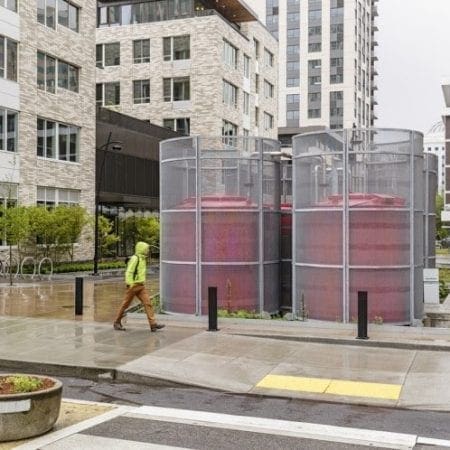Communities and Their Wastewater Management From Predicament to Prospects
We are at the end of an infrastructure cycle and the beginning of a new policy era. Wastewater is no longer a pollutant; it is now a resource. The dilemma we face now is that the regulatory governing systems for wastewater as a pollutant are not sufficient to realize the inherent potential of managing wastewater as a resource.
The municipal infrastructure that cost about $100 billion to build now has a $300 to $400 billion budget deficit gap. These infrastructures were built partly in response to the recession in the early 1970s, which led to short-term benefits going to industry and labor while the long-term debt is passed down to today’s communities. To repeat this pattern with the Environmental Health and Point Source Water Pollution Control programs is to pass the ecological and financial deficits that they represent to the next generation.

Yet under current law and new code compliant technologies, this predicament can be remedied. Among the most compelling possibilities are the innovative collection, treatment and dispersal technologies that are modular, scalable, responsive to demand, and available in competitive markets. Like distributed data processing, they enable developers and communities to place procession power where it is needed when it is needed, all while in a centrally managed network.
This ability to deliver code compliant infrastructure incrementally and on-demand dramatically alter the ways in which communities, developers, industries, and citizens can think about infrastructure. For small communities, it is already demonstrating that wastewater infrastructure can have the capacity to pay for itself. However, that isn’t to say the scalable distributed sewer approach to wastewater management is only limited to small communities.
At WEFTEC 2013 Ted Henifin, P.E., the Managing Director of the Hampton Roads Sanitation District (HRSD), acknowledged that with a “modular” scalable distributed approach to sewer the District could;
- Meet the needs of small communities and remote natural systems
- Advance integrated water resource, reuse and watershed management
- Address its infrastructure budget deficit gap
- Integrate stormwater and wastewater water for resource recovery and
- Address its increasing energy costs.
HRSD anticipates closing one of its traditional treatment plants in about five years. The treatment plant’s age and the increasing regulations for discharging into the Chesapeake Bay are evidently influencing this shutdown decision. While closing the plant might only be tentative measure and the flow is expected to be diverted to another plant, HRSD is already developing a “Sustainable Water Initiative for Tomorrow” (SWIFT) for resource recovery and recharge.
It is still in the early stages of transitioning from wastewater as a pollutant to a resource. Yet, just as we separated power generation from distribution, stranded aging, and obsolete technologies, so too will integrated water resource and watershed management alters the ways we generate and redistribute wastewater as a resource.
Additionally, during this transitioning phase, we will refocus our governing systems from water pollution and disease control to designing a water resource infrastructure that not only serves as a mutually beneficial and resilient interface to human communities but also to the natural systems on which they depend.




